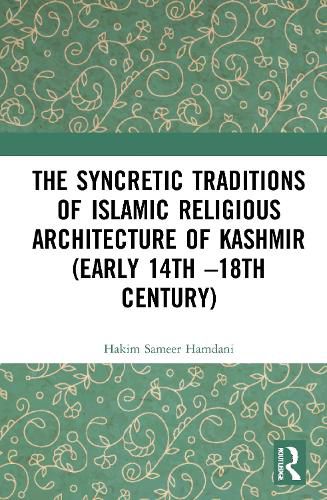Readings Newsletter
Become a Readings Member to make your shopping experience even easier.
Sign in or sign up for free!
You’re not far away from qualifying for FREE standard shipping within Australia
You’ve qualified for FREE standard shipping within Australia
The cart is loading…






This book traces the historical identity of Kashmir within the context of Islamic religious architecture between early fourteenth and mid-eighteenth century. It presents a framework of syncretism within which the understanding of this architectural tradition acquires new dimensions and possibilities in the region. In a first, the volume provides a detailed overview of the origin and development of Islamic sacred architecture while contextualizing it within the history of Islam in Kashmir. Covering the entirety of Muslim rule in the region, the book throws light on Islamic religious architecture introduced with the establishment of the Muslim Sultanate in the early fourteenth century, and focuses on both monumental and vernacular architecture. It examines the establishment of new styles in architecture, including ideas, materials and crafts introduced by non-Kashmiri missionaries in the late-fourteenth to fifteenth century. Further, it discusses how the Mughals viewed Kashmir and embellished the land with their architectural undertakings, coupled with encounters between Kashmir’s native culture, with its identity and influences introduced by Sufis arriving from the medieval Persianate world. The book also highlights the transition of the traditional architecture to a pan-Islamic image in the post-Independence period.
With its rich illustrations, photographs and drawings, this book will interest students, researchers, and professionals in architecture studies, cultural and heritage studies, visual and art history, religion, Islamic studies and South Asian studies. It will also be useful to professional architecture institutes, public libraries, museums, cultural and heritage bodies as well as the general reader interested in the architectural and cultural history of South Asia.
$9.00 standard shipping within Australia
FREE standard shipping within Australia for orders over $100.00
Express & International shipping calculated at checkout
Stock availability can be subject to change without notice. We recommend calling the shop or contacting our online team to check availability of low stock items. Please see our Shopping Online page for more details.
This book traces the historical identity of Kashmir within the context of Islamic religious architecture between early fourteenth and mid-eighteenth century. It presents a framework of syncretism within which the understanding of this architectural tradition acquires new dimensions and possibilities in the region. In a first, the volume provides a detailed overview of the origin and development of Islamic sacred architecture while contextualizing it within the history of Islam in Kashmir. Covering the entirety of Muslim rule in the region, the book throws light on Islamic religious architecture introduced with the establishment of the Muslim Sultanate in the early fourteenth century, and focuses on both monumental and vernacular architecture. It examines the establishment of new styles in architecture, including ideas, materials and crafts introduced by non-Kashmiri missionaries in the late-fourteenth to fifteenth century. Further, it discusses how the Mughals viewed Kashmir and embellished the land with their architectural undertakings, coupled with encounters between Kashmir’s native culture, with its identity and influences introduced by Sufis arriving from the medieval Persianate world. The book also highlights the transition of the traditional architecture to a pan-Islamic image in the post-Independence period.
With its rich illustrations, photographs and drawings, this book will interest students, researchers, and professionals in architecture studies, cultural and heritage studies, visual and art history, religion, Islamic studies and South Asian studies. It will also be useful to professional architecture institutes, public libraries, museums, cultural and heritage bodies as well as the general reader interested in the architectural and cultural history of South Asia.